|

Save a Life Today.
Tuesday, April 1, 2008
Fayetteville, Arkansas
Some days later, when the vigils are done, the candles snuffed, the bodies embalmed and cremated, the remains put away, the names of the lost ones inscribed on tombstones in the graveyard or on brass markers in the mausoleum — after all these sombre acts of the aftermath are put to rest, the story of the massacre fades from sight. Look and you might see shades of it in the far away drift of the downstream, see it fading fast in the ceaseless river of new event.
Northern Illinois U. Will Tear Down
Building Where Students Were Shot
The Chronicle of Higher Education
Feb. 27, 2008 — The classroom building at Northern Illinois University where a gunman fatally shot five students before killing himself will be torn down, state and university officials announced today. In its place, the university will use state funds to construct a "state of the art" classroom building, to be named Memorial Hall.
Though students resumed classes this week after a 10-day closure, Cole Hall, which sits in the center of the university's DeKalb campus, has remained shuttered since the shooting.
My Readers Answer the Call.
When we last met here on the byted page of Crow's Cottage, the date read February 27 under the headlines, "They Disappear. Love and the Destroyer." How swiftly hath the time passed! Between then and now arises a gulf so deep I can barely imagine it, the monsters and cesspools, the unknown horrors and gnarling thugs — rank and insidious — down there in the riven dark. But the gulf is narrow enough for the lucky to leap over. I take my chances. Here goes.
After posting "Love and the Destroyer," I sent an e-mail inviting submissions to a discussion about issues raised by the February massacre at Northern Illinois University, particularly issues connected to malignant violence and murder in school classrooms. Several readers replied. It is my privilege to share their commentary.
We begin with a submission from sixteen-year-old Toshi Naim, who once sat in my classroom as a student of English language arts. Toshi Naim is a pseudonym created by the writer at my request. An outsider and a rebel, Toshi is a determined youngster with a quest for knowledge and the indomitable spirit of the overcomer. She writes:
This is the view of a 16-year-old girl, who understands a lot about being in pain, made fun of, and even having thoughts about hurting other students. But never will I ever mean to act on my feelings, for to do that would be wrong. I call it, "Violence in Schools: The Real Story from a Student's View."
Look to those you see every day at your school and you will know already that one or more of those students are highly depressed or always angry. Understanding this takes more than a little bit of thought. Many teens and young adults do not understand this.
Also, parents don't understand a lot of what is going on with their children and really, they don't understand the results of what they have taught them, mothers showing hate and fathers doing the same.
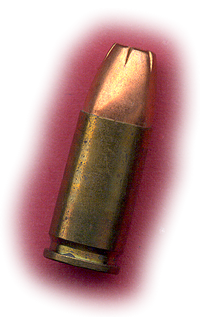 The children learn to hate people who are different from the common person you see walking around. More and more we see these crimes against gays, or just out-in-out general shootings from the one student who has taken too much of this hate inside.
The children learn to hate people who are different from the common person you see walking around. More and more we see these crimes against gays, or just out-in-out general shootings from the one student who has taken too much of this hate inside.
The students to blame for it never have to own up to what they have done.
You never look to see the bully as a straight A student. The bully isn't someone who helps out everyone around him or her, but even I have shown hate more than a few times in my life. We all have, and saying that we haven't shown hate would be the all-time high of a lie.
What about the kids that our schools put into a special class for misbehaving or making low grades? They are said to have hate in their heart. They've seen hate as well. A lot of us have gotten this hate from those we have grown up with. Some older folks show hate to blondes, fat people, blacks, Mexicans, whites, school, and even to people we call "mental." So instead of teaching children that showing hate to others is wrong, many adults show children that hate is the right thing for them to do.
What makes a young person an outcast? Sometimes others talk behind their back without understanding how sensitive these students are. Teachers don't stop it, either, don't think anything about the whispers of teens during class, the whispers about someone else, the hateful rumors that are always found out and hurtful.
Other things that can push a teen to the outside
are breakups with others, or friends hurting them, or not being friends anymore. You get that alone feeling when you don't know anyone around you. The teachers might be doing their job of teaching, but too many of them are not being human and showing that they care, saying a hello and asking if you're OK every now and then.
For students on medication, someone should know they are on them to make sure they stay on them 'cause thoughts can run wild with hate just from the withdrawal they feel.
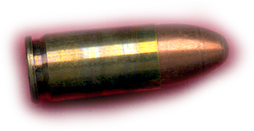
Even now there is a student who wants to hurt,
or even kill someone else. Yes, these can be normal thoughts, and no student should be punished for these thoughts, but teachers should pay more attention when the signs are showing that maybe this student is unstable. Maybe, just maybe, they need someone to talk to, even if that friend is a teacher or a sibling. Yes, the student will act like they don't care what the other person says, but they do, and the caring attention of others does help.
I personally know this 'cause I have had thoughts about hurting someone but never really acted on these feelings. Back when I had the thought of harming or even killing someone, I had a group to talk to, and even a very nice teacher, who helped me gain who I am.
One solution would be groups for anger management, groups where students have the right to meet once a week to talk about how they feel, maybe some outdoor activity with teachers and students to show ways to get your anger out without hurting others.
I can give examples of so many things students do to be mean to one other, but most of all I can tell you what has happened to me firsthand. Having deadly allergies has set me up to be "pranked" by other students. I'm seriously allergic to fish and shrimp, but I've had pieces of fish or shrimp thrown at me at school, both at my old school and my new school. My airway swelled shut and I could have died because it's an airborne allergy, which means all I have to do is smell it. So I have heard mean things from people I don't even know at school, such as "if you don't watch where you're going I'm going to force feed you shrimp" or "watch out now I have crab in my bag I wouldn't want you to die now... or would I?"
Students today find new ways to hurt each other, and it's going to grow and grow until it gets way out of hand.
So, parents and teachers, look at your children tonight, or in the morning, or after school, and ask them, "Is there anything you want to talk about?" Ask them what kind of things happened at school to scare them, or if anyone might be hurting them. Have them tell you about their friends. Meet their friends and talk to them, too. Tonight when you sit down and eat, don't sit in silence. Ask your child about violence in their school. Don't just get it from me. Get your children to talk and think about this stuff. It's the best way to save a life.
Trace Amounts of Drugs in System
Chicago Sun-Times
March 15, 2008 — Traces of nicotine, cold medicine and an anti-anxiety drug were found in the body of a man who killed five students in a Northern Illinois University classroom last month, authorities said Friday. The tests found less than .025 micrograms of anti-anxiety drug Alprazolam, commonly known as Xanax, in Kazmierczak's bloodstream.
Tests also found trace amounts of nicotine and cold medicine, benzodiazepine and pseudoephedrine. Experts said it was unlikely that the combination or any one of those substances individually would cause someone to engage in violent behavior.
In interviews with CNN, the murderer's girlfriend said he had been taking Prozac, Ambien and Xanax, but had stopped taking the Prozac in the weeks before the shooting.
People Just Murder Each Other.
"I just read your piece on school shootings," Crow's Cottage reader Jenn Hoyer wrote. "I've never known what to say about school shootings. I still don't. Or any shootings. I don't know what compels someone to do that. I don't know if it's something that can be stopped." Jenn continues:
People have always murdered each other. In periods of history where murder appears excessive (and I don't even know that it is, since we only hear about some shootings that happen, and it might not be the case that there are more, just the case that they are being more reported) it's either linked to war or climate change.
I don't know if that applies to shootings, let alone school shootings.
Imaginatively speaking I'm with the people dancing on the bar. You know the story of Augustine, the bard? Plague ravaging the city, Turks about to attack, so what do we do? We live like there's no tomorrow, because there might not be one. Augustine and the townsfolk spent the night in the bar, singing and drinking. Hobbling home he fell into an open burial pit for plague victims, which was instrumental in him surviving the night. My grandmother always used to say, "You only go around once." She would have been dancing on the bar, too, I think.
But that might be because that's what she did during the Depression, and somehow that metanym became her to me.
I guess school shootings have always left me flummoxed.
I don't really know what to say about them.
Tap Tap Tapping.
Jenn's reference to "people dancing on the bar" alludes to a passage in "Love and the Destroyer." The passage itself is an allusion, a shard of antithesis to gloom, derived from a saucy dance number in the 1933 Busby Berkeley-Warner Brothers Hollywood musical, Footlight Parade. In the number, American sailor James Cagney and Chinese hooker Ruby Keeler are singing and tap tap tapping on a whisky bar to the tune "Shanghai Lil." What better antidote to the blood and carnage of malignant aggression — should you avoid it, should you survive it — than a night of dancing and singing?
Oklahoma Lawmakers Say
Student Guns Can Stop Violence
Bloomberg.com
March 27, 2008 — Oklahoma lawmakers have a plan to prevent violent outbreaks at colleges: let students carry guns.
The state's House of Representatives voted March 13 to allow students and employees who have law-enforcement or military backgrounds, or who undergo training,
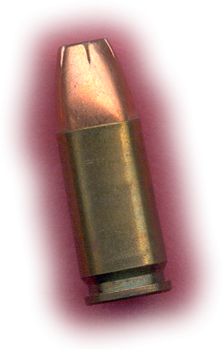 to carry concealed weapons on public campuses. If the measure is enacted, Oklahoma will be the fourth state where collegians can be armed legally, as a result of legislative, court or administrative action in the past five years.
to carry concealed weapons on public campuses. If the measure is enacted, Oklahoma will be the fourth state where collegians can be armed legally, as a result of legislative, court or administrative action in the past five years.
A group called Students for Concealed Carry on Campus has sprung up, claiming 23,000 supporters including members at Harvard University, since a senior at Virginia Tech in Blacksburg killed 32 people last April. Legislators in 10 states are considering bills to permit weapons at colleges, pressed by gun-rights proponents. Opponents, including Oklahoma's 25 college presidents, say firearms will make crossfire deaths more likely.
"If it would help for me to get down on my knees to plead with the legislature for the safety of our students, I would do so," said David Boren, the president of the University of Oklahoma in Norman. The legislation, which would add 25 schools to the list of those with guns allowed, would invite "chaos" during emergencies, said Boren, a former U.S. Democratic senator from the state.
Jared Sano, 25, a senior studying business information systems at the University of Utah, in Salt Lake City, said he carries a .45-caliber Heckler & Koch semiautomatic handgun almost all the time on the campus. "If somebody wants to do harm to me or a loved one, I want to have the ability to protect myself or protect them," Sano said. "I hope and pray there's never a day when I need to use my firearm, but it's just there in case I ever need it."
You Better Duck.
Michael Schaefer, my American Literature professor at the University of Central Arkansas a few years back, wonders what might happen at the classroom gunfight. Michael writes:
Your piece is thoughtful and thought-provoking, Eb, and I'm grateful for the invitation to join your discussion on this subject. I have, of course, no panacea to offer. My main reaction so far is that we must resist the escalation of such tragedies by rejecting the renewed calls to allow teachers and students to carry concealed weapons on campus, which many people evidently see as the solution to the ongoing wave of attacks.
"If that teacher had been armed," someone said to me at a social event last Friday, "he could have stopped that guy in his tracks." Maybe so — MAYBE — but if teachers and students are armed, I'm certain we run the risk of even more needless deaths as a result of hyper-reactiveness. I'm standing at the front of my English class, and someone I don't recognize walks into the room. I or one of my students shoots him dead, only to discover a few minutes later that he was late for Spanish class and, in his haste, had accidentally walked into the wrong room.
Big Guns (and an Apparition)
To Outfit Every School Room.
Whether or not teachers and students are allowed under law to carry a pistol isn't much of a concern here at Crow's Cottage, where we're armed to the teeth from morning to night and ready for bear and boogers. T H E O T H E R S can pass their laws, pack their pistols, and be brave and bold to their heart's content. Experience reveals to me the boundaries and limits of personal power. In the realm of the deciders, those elected officials and stratifying nomenklatura who are entrusted to determine those among us who should be, or should not be, legally authorized to conceal upon our persons a big handgun at school.... To them, I am an apparition.
I've considered the prospect of being armed in the classroom with my Colt .45, and how it might provide a remedy in the very worst of cases, but there is always the possibility of bystanders
 catching a bullet — and then where would I keep the pistol? In a holster to make it instantly available wouldn't that be a sight right there in front of the class or maybe in a desk locked of course but who other than me might snatch away the key or grab a prybar get their hands on the hot gun in a moment of anger happens so fast you'd be amazed by the swiftness of it all. On the issue of arming teachers, my stance is neutral. The world can try whatever it wants to try, but firepower won't make any difference in the long run, and I doubt that despite my background as an infantry trooper skilled in the instruments of death — doubt I would arm myself that way. There are other options for taking out the bad guy.
catching a bullet — and then where would I keep the pistol? In a holster to make it instantly available wouldn't that be a sight right there in front of the class or maybe in a desk locked of course but who other than me might snatch away the key or grab a prybar get their hands on the hot gun in a moment of anger happens so fast you'd be amazed by the swiftness of it all. On the issue of arming teachers, my stance is neutral. The world can try whatever it wants to try, but firepower won't make any difference in the long run, and I doubt that despite my background as an infantry trooper skilled in the instruments of death — doubt I would arm myself that way. There are other options for taking out the bad guy.
I've thought about how my society channels its resources to deal with these incredibly difficult problems. We recoil and react, condemn and overreact. We avoid placing practical emphasis on the spirit and personal morality because of a deeply entrenched secular humanist fear of religion, chiefly the fear of Christianity — and yes, there should be reasonable separation, but not abject rejection.
One can champion the advantages of a spiritual life and the importance of moral values without promoting a particular religion. One can also learn to open one's eyes and peer beyond the veil of stereotype and popular fears. In my three years in the classroom, working with dirt-poor kids in the backcountry and with pushed-aside and marginalized teenagers in the alternative classroom of the city, I worried only once about someone coming in with guns blazing — and that perception proved totally false. With my young charges I often discussed spiritual values and moral precepts as principles of personal success and guideposts for the navigation of life. If they listened, my students could figure out that my values were based in Christianity. They also knew that in my presence they'd darned well better respect the Buddhists from Laos, the self-professed godless heathens, and the one little Wiccan witch who liked to cast spells and say "Blessed Be."
A Way Out?
I asked Michael: Do you see any way out, or do we just clean up the blood, bury the dead, and endure? My teacher replied:
You speak wisdom here, Eb; you're saying much more eloquently, and with the weight of military experience, what I was groping at in my message.
I staunchly defend separation due to the fear of the majority imposing its particular doctrines on the minority, but you're entirely right about the need for discussions of spirituality and morality. This is how I generally focus my World Lit classes, trying to emphasize that the essential common thread among all religions is compassion — that compassion itself, as Tolstoy shows Ivan Ilyich learning and as Naguib Mahfouz's nameless narrator in "Zaabalawi" seems to miss, is the primal source of spirituality.
Disconnected and Disenfranchised
By a Disingenuous System.
LitTunes mastermind Christian Goering sent a considered response, digging deep into theory and practical experience in search of the root causes of murder in the classroom. A teacher and one-time high school football coach, Christian points to a disconnect between school life and the greater realities of adolescent experience as a likely source of aggression. He writes:
The nature versus nurture argument again presents itself when considering school violence. If one agrees that nurture, at least in part, does play a significant role in the development of children, one must seriously consider the context in which these students are raised. Never has there been as much disconnect between what happens in American schools and what happens in the lives of students outside of school. Never.
Never before has this country seen the current mega-emphasis on testing and assessment. Students are swamped with high stakes bubble sheets and thinly veiled threats of extra classes in reading or math if they don't "help raise the school's standing" in the ever intrusive eyes of the state. Never have schools been so intimidated with shrill threats of loss of funding and removal of local leadership if success on tests isn't realized. Never could a generation of students care less.
Never before has a piece of legislation been so misunderstood. No Child Left Behind is an expertly crafted and shrewdly advertised exercise in political rhetoric.
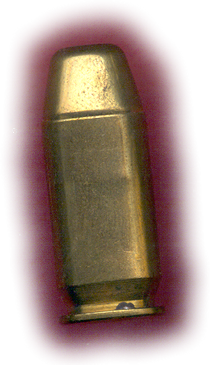 It will bear no significant educational results, but it could completely wreck the public school system. Yet, who can argue with it and not pay the price of lost credibility? Who among us is ready to leave a child behind? What we should do is leave this legislation behind.
It will bear no significant educational results, but it could completely wreck the public school system. Yet, who can argue with it and not pay the price of lost credibility? Who among us is ready to leave a child behind? What we should do is leave this legislation behind.
Never before have students participated in such richly literate lives as they do today. Text messaging and iPods, gaming and social networking, blogs and cell phones are all-pervasive tools of daily communication that most every student employs every night and day. Communication is a constant, vital, invigorating part of "twitch speed" students' existence.
Bustle (2004) states: "It's almost ironic that, at time when young people are becoming credible consumers of mass media and popular culture, curricular standards and pedagogical practices move further from real-life engagements with media to more traditional approaches to teaching and learning."
Lesesne (2007) agrees: "Today's adolescents are connected beyond the walls of their bedrooms and their classrooms through e-mail, instant messaging (IMing), social networking, blogs, and personal web pages. They connect with other adolescents around the world via e-mail. They download music from other countries.... Adolescence is all about speed and convenience and immediacy (62)."
When our dutiful webmaster posted the call for contributions to a discussion thread about school violence, I thought first about students and schools. How do they play into these issues? How are schools and teaching different now than they were five or ten years ago? How are students different? And, of course, I wonder about the role that music plays in all of this.
Some people believe music, along with video games and violent movies, are partly responsible for
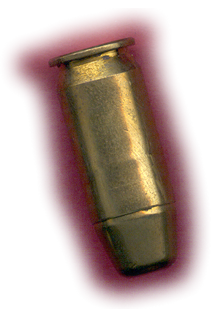 desensitizing the youth and ultimately creating gun-wielding monsters. According to Anderson et al. (2003), the psychological effects of violent song lyrics on adolescents were demonstrated through a strong statistical relationship between aggressive thoughts and feelings and music by the rock band Tool. "One major conclusion from this and other research on violent entertainment media is that content matters," said Dr. Anderson. "This message is important for all consumers, but especially for parents of children and adolescents."
desensitizing the youth and ultimately creating gun-wielding monsters. According to Anderson et al. (2003), the psychological effects of violent song lyrics on adolescents were demonstrated through a strong statistical relationship between aggressive thoughts and feelings and music by the rock band Tool. "One major conclusion from this and other research on violent entertainment media is that content matters," said Dr. Anderson. "This message is important for all consumers, but especially for parents of children and adolescents."
However, the researchers failed to demonstrate a lasting relationship between violence and the effects of violent song lyrics. While students may become desensitized to violence by watching movies and listening to songs containing violence, I remain much more interested in understanding the adolescents of today rather than pointing fingers at them and the popular culture they embrace. That culture, though different than any other culture of the past, is a product of itself in that it is created in the image of previous generations, and then constantly modified and changed by external factors clearly beyond anyone's control.
To help me better understand my students, I look to how they are represented in music. The old adage of what we see is what we believe seems to hold true. Does the perception of today's youth by older generations ultimately feed stereotypes and create school killers? Are some of these malignant aggressors simply rising to the expectations of this culture?
P.O.D. (Payable on Death) scored a number one hit with their 2002 tune, "Youth of a Nation," which was inspired by school shootings at Columbine and Santana High Schools. Look at the lyrics and ponder how they reflect student experience.
Last day of the rest of my life
I wish I would have known
Cause I'd have kissed my momma goobye.
I didn't tell her that I loved her or how much I cared
Or thank my pops for all the talks and all the wisdom he shared.
Unaware I just did what I always do.
Everyday the same routine before I skate off to school
But who knew that this day wasn't like the rest,
Instead of takin the test I took two to the chest.
Call me blind but I didn't see it comin
And everybody was runnin but I couldn't hear nothin,
Except gun blast, it happened so fast
I didn't really know this kid though I sat by him in class.
Maybe this kid was reachin out for love
Or maybe for a moment he forgot who he was
Or maybe this kid just wanted to be hugged,
Whatever it was I know it's because
We are, We are the youth of the nation
We are, We are the youth of the nation
We are, We are the youth of the nation
We are, We are the youth of the nation
And they are. I would hesitate to say that every student in America goes to school with thoughts similar to those expressed in the lyrics, but most do. School shootings cannot be associated with any one kind of school, a certain type of student, or predictable situations. The next massacre could be at your school, or it could be perpetrated by a child you know.
We send our students to the school campus — a former place of refuge metamorphosed into a battle ground — to meet Adequate Yearly Progress (AYP) targets and participate in the cattle drive of ever increasing state standards for measurable progress in public education. We send them to learn test taking strategies. We send them to a place antiquated and generally irrelevant in comparison with their off-campus reality. Given these truths, it should not surprise or shock anyone when the headlines flash, when the innocent die, and when another school and another town are immortalized by death and violence.
And Then There Is Love.
Joanna Garza, a public school teacher and dear friend of the CornDancer family, turns our attention to the solution. She writes:
From my understanding of the world, love is
the answer and love comes from God.
 I know that I am not always loving, kind, patient, or anything good. Human nature has its darker sides. Without conviction and love for life, it's a bleak existence. My mother always taught me that God was the creator of life and that he is the final judge of our time on earth. Our culture is temporal, but the soul is eternal. Without a belief in God, man is accountable to no one but himself.
I know that I am not always loving, kind, patient, or anything good. Human nature has its darker sides. Without conviction and love for life, it's a bleak existence. My mother always taught me that God was the creator of life and that he is the final judge of our time on earth. Our culture is temporal, but the soul is eternal. Without a belief in God, man is accountable to no one but himself.
There are plenty of "good people." But now, in our day, God is ignored in our society and people are empty inside. "Things" do not make me happy. All is superficial. What really counts are people, but many of them are broken, many have fragmented relationships, and many run off pure emotion.
Our culture is greatly lacking, and legislation bans "religions" that teach about the inner-person, the soul. The soul is the Creator's way of communicating with people. U-ne-tla-nuh is the Great Spirit, the Holy Spirit to the Cherokees. People can reject or accept His presence in their lives. Our secular culture can dismiss these notions. Violence and destruction continue to escalate.
I hope that I am not too preachy. Those who do not want to listen won't. Those who are open-minded will. Those who question should search.
God is controversial and always will be to people who leave him out of life. Governments cannot change or protect us from human behaviors. Individuals are responsible for governing their own actions and must decide on what set of rules they are playing by. It seems obvious to me that the people committing these crimes in schools are full of despair and see no hope in this world. It is then that we should remember even more that there is despair and agony among us. To me, that should be all the reason in the world to believe in a God who is separate from this evil world.
As much as I can, I love.
It is never enough love. I love, but never enough.
|




